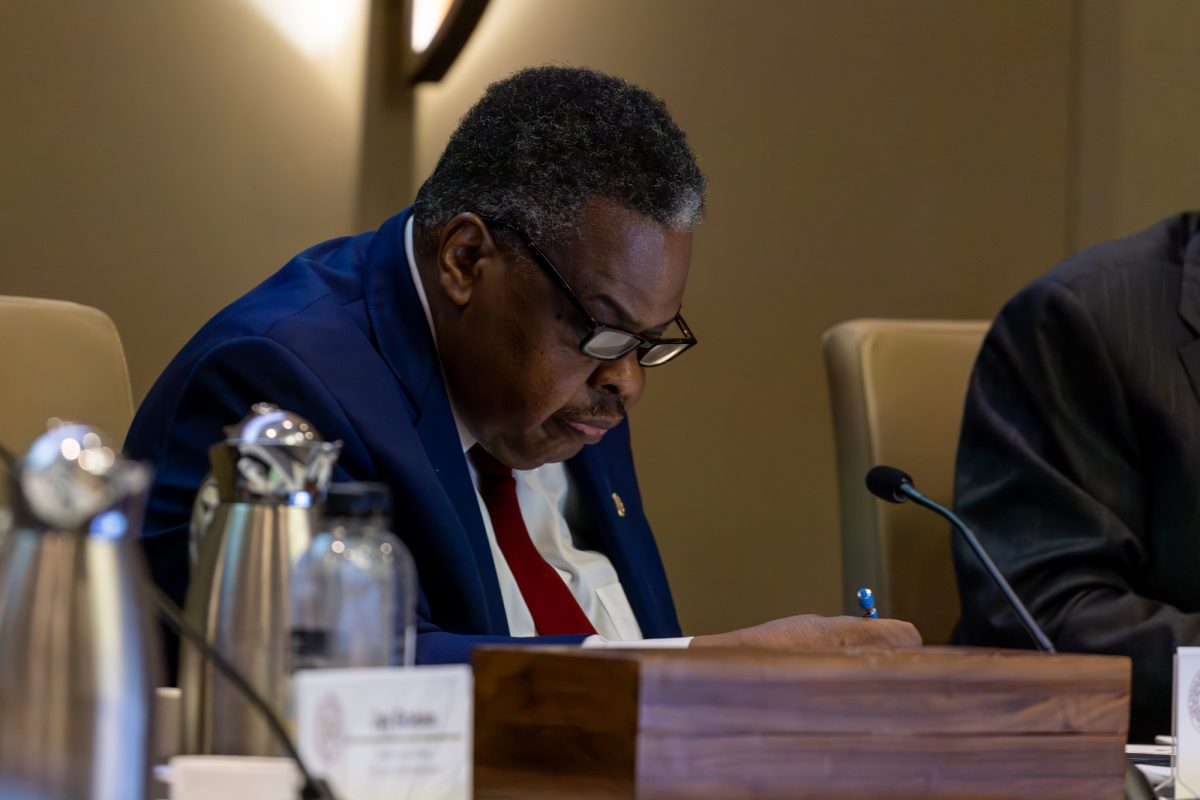When it comes to sexual activities, communication with your partner is of the utmost importance.
Whether verbal or nonverbal, consent requires constant communication between all parties when engaging in any sexual encounter. “Yes” is not a one-size-fits-all pass to engage in every type of sexual activity; rather it is the start of a conversation regarding boundaries. The Texas A&M System defines consent in Regulation 08.01.01, Civil Rights Compliance.
“Consent – clear, voluntary and ongoing agreement to engage in a specific sexual act. Persons need not verbalize their consent to engage in a sexual act for there to be permission. Permission to engage in a sexual act may be indicated through physical actions rather than words,” the rule reads. “A person who is asleep or mentally or physically incapacitated, either through the effect of drugs or alcohol or for any other reason, or whose agreement was made by threat, coercion or force, cannot give consent. Consent may be revoked by any party at any time.”
Assistant Vice President and Title IX coordinator Jennifer Smith said the A&M Title IX office often helps students navigate through what consent means.
“What [consent] really means is that you’ve checked in with your partner and you have clear permission to interact with their body,” Smith said.
Brazos Valley Sexual Assault Resource Center, or SARC, education and outreach specialist Patricia Pitones said consent is a consistent acknowledgement of boundaries.
“Consent is an ongoing process of discussing boundaries and what you’re comfortable with … your partner or [with] somebody that you may be intimate with,” Pitones said. “Typically, consent is an agreement between participants to engage in any type of sexual activity, and it should be clearly and freely communicated. A verbal or an affirmative expression of consent can help both you [and] your partner to understand and respect each other’s boundaries.”
Health Promotion coordinator Denise Crisafi, Ph.D., said it is important to dive further into what communication means when participating in sexual activities.
“When we are engaging in an act that is supposed to be emotionally connective and physically connective, instead of something that people just do because it seems like it’s fun or age appropriate, we really have to get past that simplified definition to dig a little bit deeper into what communication means,” Crisafi said.
Pitones said setting limits in relationships is important and should be discussed regularly.
“Consent is basically boundaries — open communication and being able to provide that safe space and comfortability, [and] allowing [your partner] to let [you] know what [they] need, what [they] want and setting those boundaries because those are pretty much the framework to everything,” Pitones said.
Smith said there are various situations in which people cannot consent, including silence, intoxication and coercion.
“Sometimes students interpret silence as consent, and that is not an agreement with someone else to engage in a sexual act,” Smith said. “You have to get a ‘yes.’ [That ‘yes’] can be verbal or nonverbal.”
Crisafi said over half of all communication in any situation is nonverbal, so it is important to not only listen to what someone says, but also to pay attention to nonverbal cues and messages.
“We should be looking at somebody’s body language, their facial expressions, if they are reciprocating or not, [if] they look emotionally distressed or [if] they look like they are enjoying what they are doing, then checking in with them verbally at every single point and continually along the way,” Crisefi said. “It doesn’t matter how long a sex act [has] occurred; it doesn’t matter what type of sex someone is having, but check in on those variables and nonverbals.”
University Police Department, or UPD, Lt. Bobby Richardson said the department follows both the A&M system definition and Penal Code 1.07.
“‘Consent’ means assent in fact, whether express or apparent,” the code reads.
Richardson said consent is situational, meaning how one person consents may not be the same as the process of another, but ultimately both parties must be in agreement.
“Both parties have to agree, whether it be physical actions or verbally, but they both have to agree,” Richardson said.
According to alcohol.org, more than 50 percent of sexual assaults that occur on college campuses involve drug or alcohol use. When drugs and alcohol come into play, Crisafi said an individual is no longer able to communicate effectively and may not be aware of what is happening.
“If they’re incapacitated, they’re obviously not going to be able to verbalize ‘no’ or verbalize ‘yes,’ because they are passed out; they are intoxicated to a point where they don’t know what’s going on,” Crisafi said.
Additionally, it is important to remember consent may be withdrawn at any point before, during or after a sexual encounter. Since consent can be withdrawn at any point, Crisafi said it is important to make sure your partner is comfortable, and if not, the sexual activity should not continue.
Crisafi said even if someone has engaged in a sexual act before does not mean they are obligated to do so again.
“Just because someone hooked up with another person at 2 a.m. last Tuesday doesn’t mean that’s a standing appointment, or that it might ever happen again,” Crisafi said. “It’s not something that’s assumed by what someone did, what they said, what they texted, how they dressed when they went out on a date that evening.”
If someone is sexually assaulted, Richardson said UPD encourages survivors to reach out to the appropriate law enforcement agency immediately. Richardson said his department has a victims advocate who can help students navigate the process of reporting a sexual assault.
“Our victims advocate can not only provide resources, but can also walk [students] through the process whether they’re filing a complaint with the Title IX Office or Student Conduct, going to court or whatever the case may be,” Richardson said.
Both the Title IX Office and SARC serve those who become victims of sexual assault. Pitones said SARC offers resources, including counseling, therapy services and support groups.
“We like to say we like to meet a survivor where they are in their healing journey,” Pitones said. “Whether they want to report or not, whether they want to receive a safe exam or not or whether they want … somebody to talk to, they can definitely call our crisis hotline, and we can assist them in any way.”
Defining, communicating mutual consent
December 9, 2021
Photo by Graphic by Melanie McBride
When it comes to consent, there are no blurred lines. Informed and specific verbal expression must be given.
0
Donate to The Battalion
$1745
$5000
Contributed
Our Goal
Your donation will support the student journalists of Texas A&M University - College Station. Your contribution will allow us to purchase equipment and cover our annual website hosting costs, in addition to paying freelance staffers for their work, travel costs for coverage and more!
More to Discover










